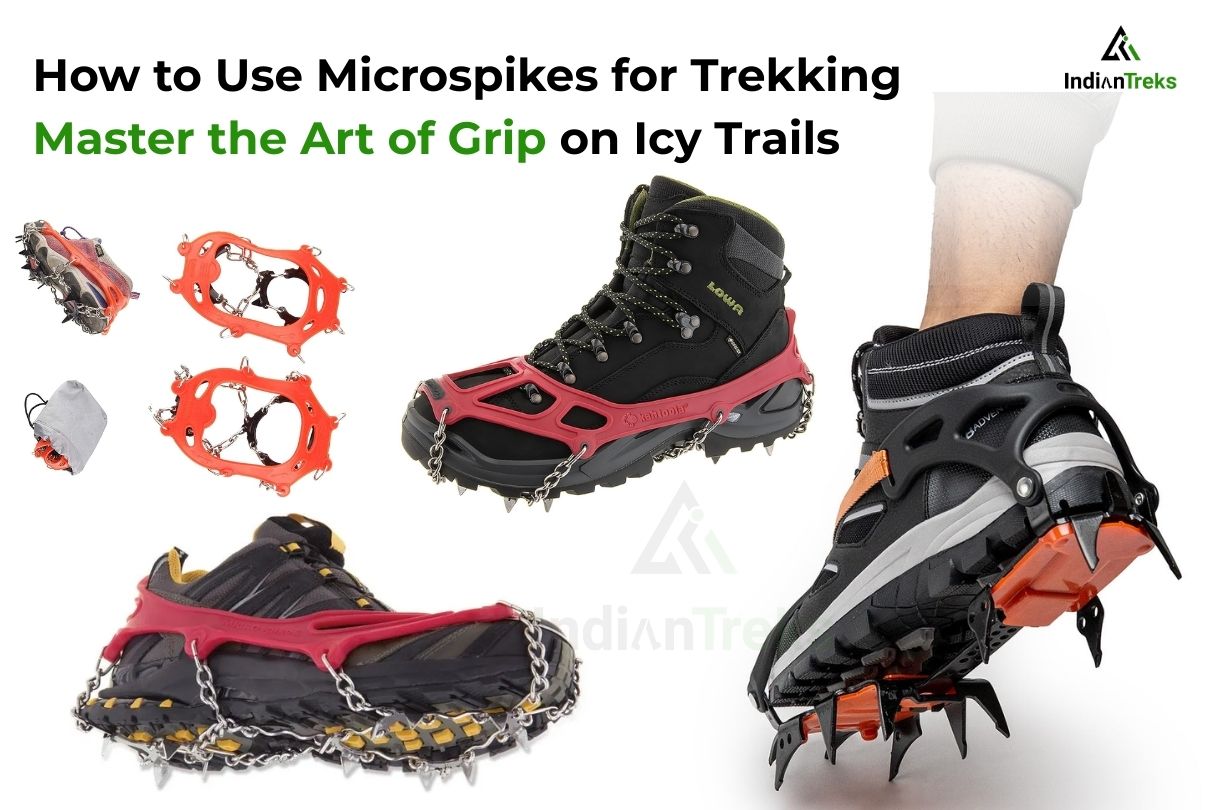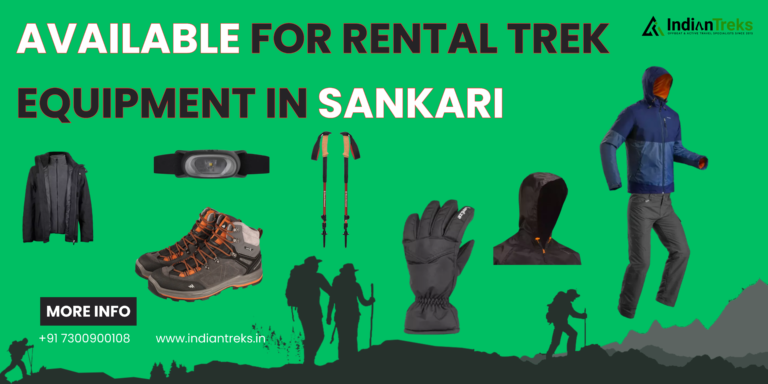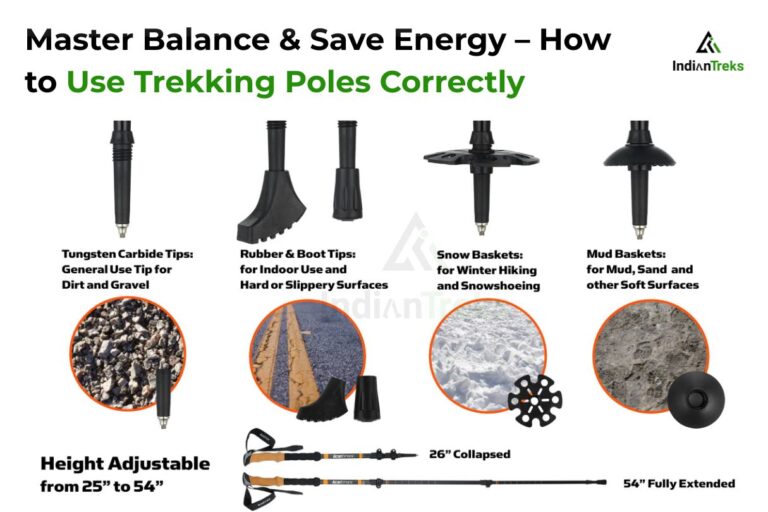How to Use Microspikes for Trekking
When winter blankets the trails, many hikers think it’s time to pack away their boots until spring. But with the right gear, snowy hikes can be some of the most rewarding experiences of the year. One of the most valuable investments for winter trekking is a good pair of microspikes.
Microspikes are lightweight traction devices that slip easily over your hiking boots. They provide excellent grip on packed snow and icy trails, allowing you to move faster, safer, and with far more confidence. For many trekkers, they’re a game-changer when it comes to winter adventures.
It’s important to know that microspikes are just one of the three main traction tools winter hikers rely on — the other two being mountaineering crampons and snowshoes. While all three serve the purpose of improving traction, each is designed for specific conditions. In this blog, we’ll break down the differences between them and guide you on when to use microspikes, crampons, or snowshoes so you can trek smarter and safer in every winter scenario.
What Are Microspikes?
Microspikes are lightweight, flexible traction devices designed to slip over your winter hiking boots, trail shoes, or even regular winter boots. They’re built for stability on packed snow and icy trails, making them a must-have for hikers who don’t want winter conditions to slow them down.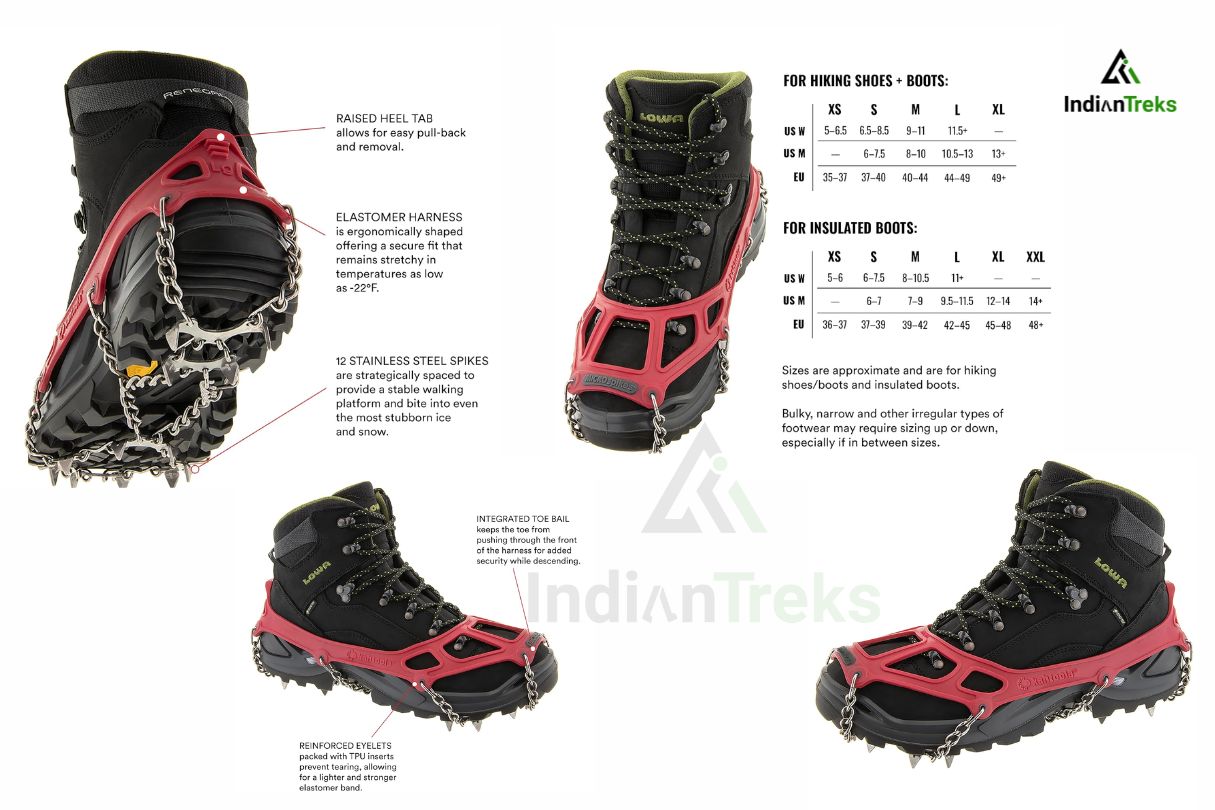
One of the biggest advantages of microspikes is their convenience. You can easily carry them in your backpack and put them on only when needed. For example, if your trail begins on dry ground, keep them stowed away, then slip them over your boots once you hit snow or ice at higher elevations. Within seconds, you’ll notice the difference in grip and security — no more awkward slipping and sliding.
That said, microspikes are not designed for every terrain. They excel on moderate, relatively level trails, but when you encounter steeper, icy slopes, you’ll need to upgrade to something more aggressive — like mountaineering crampons, which have longer, sharper spikes to bite into hard ice.
Are Microspikes Necessary?
Microspikes are an essential safety tool for anyone hiking, trekking, or backpacking in winter conditions. They provide the traction and stability needed to navigate icy trails, snow-covered mountain paths, and other slippery terrains safely.
Even on flat or mildly snowy surfaces, microspikes can improve grip, making them useful for everyday activities like walking on icy sidewalks — not just for avid hikers.
For those who prefer to avoid bulky snowshoes on packed snow trails, microspikes offer a lightweight, compact, and easy-to-carry alternative. They slip over your boots in seconds and provide reliable traction without adding extra weight to your pack.
How to Put On and Use Microspikes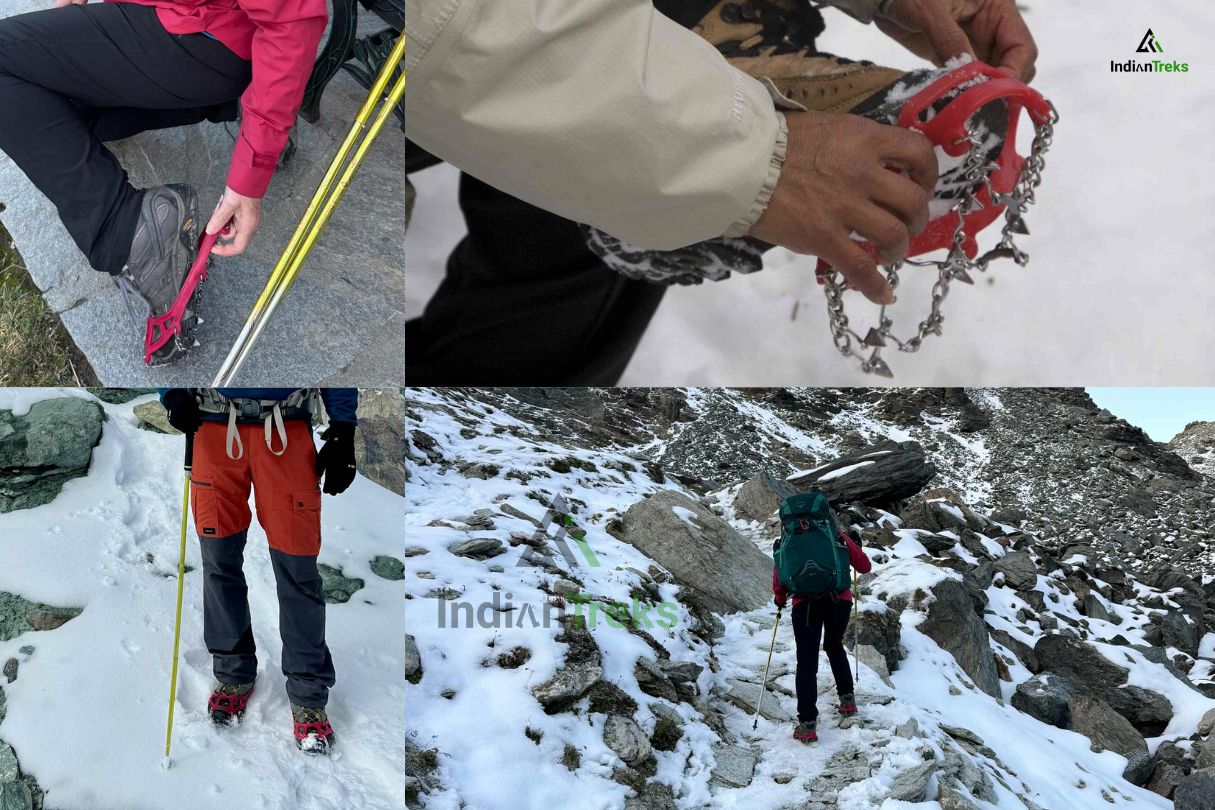
Microspikes are simple to put on and remove over your regular hiking boots, trail shoes, or winter footwear. Follow these steps for safe and effective use:
Sit Down and Prepare: Start in a sitting position with your foot slightly inclined for better control.
Align the Microspikes: Position the front points of the microspikes to match the toe of your shoe. Ensure the toe bail aligns with your toes, the rubber loop faces upwards, and the spikes point downward.
Slip Them On: Slide the microspikes toe-first onto your shoe, similar to putting on a sock. Then secure the back end around your heel.
Check the Fit: Make sure the microspikes are snug and evenly aligned. Loose spikes can reduce traction or cause discomfort.
Walk Safely: When wearing microspikes, maintain a slightly wider stance and take shorter, deliberate steps on icy or uneven terrain. This will maximize grip and reduce the risk of slipping.
Removal: To remove, use the rubber loop at the heel and pull the microspikes off like a sock.
Microspikes vs. Crampons
When it comes to winter traction devices, the main difference between microspikes and crampons lies in their design, weight, and intended use.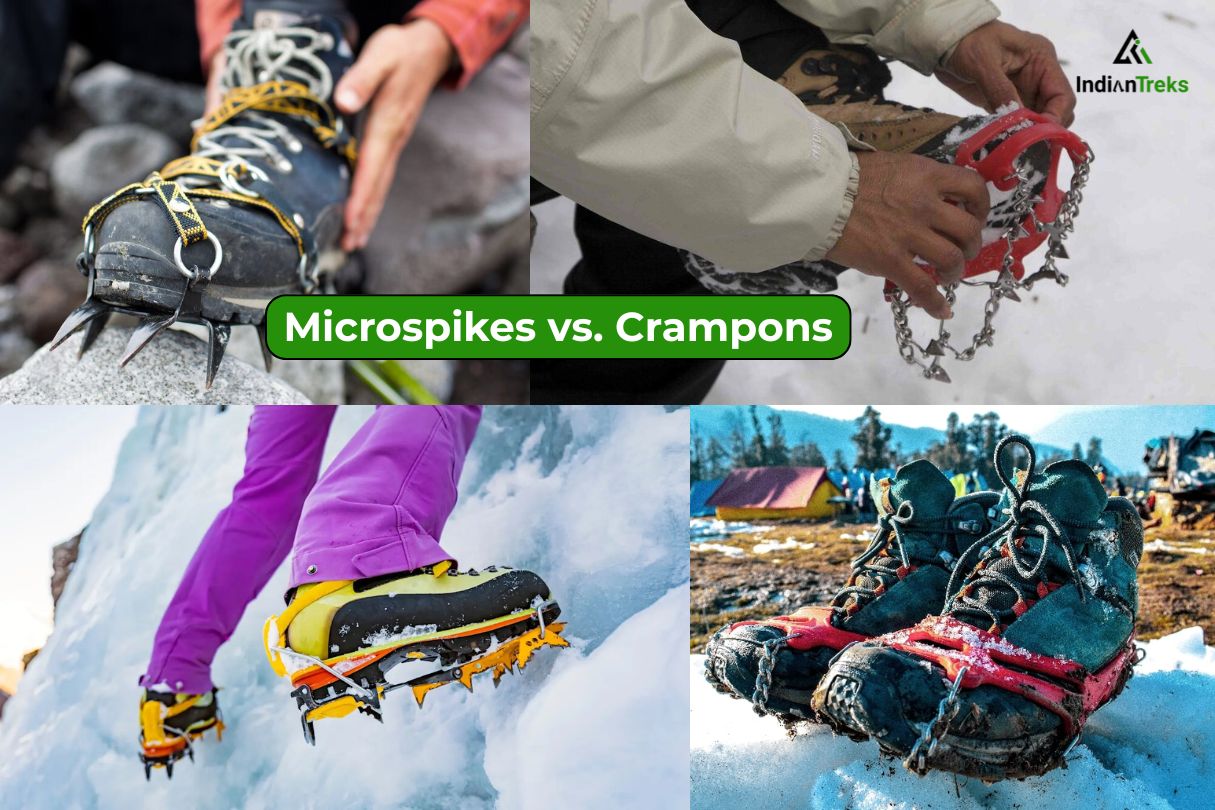
Microspikes are lightweight, flexible, and easy to slip over regular hiking boots or trail shoes. They’re ideal for moderate snowy or icy trails, mixed terrain, or even trail running in winter. Their short spikes and chain system provide reliable grip on packed snow and light ice but aren’t built to bite deeply into hard, steep ice surfaces. Think of microspikes as your go-to for everyday winter hikes and treks where comfort and convenience matter most.
Crampons, on the other hand, are a much more technical tool. With longer, sharper spikes (about half an inch), they can dig deep into hard ice and provide a secure hold for your entire body weight. Originally designed for ice climbing and mountaineering, crampons are essential when tackling steep, high-angle ice fields, glaciers, or frozen waterfalls.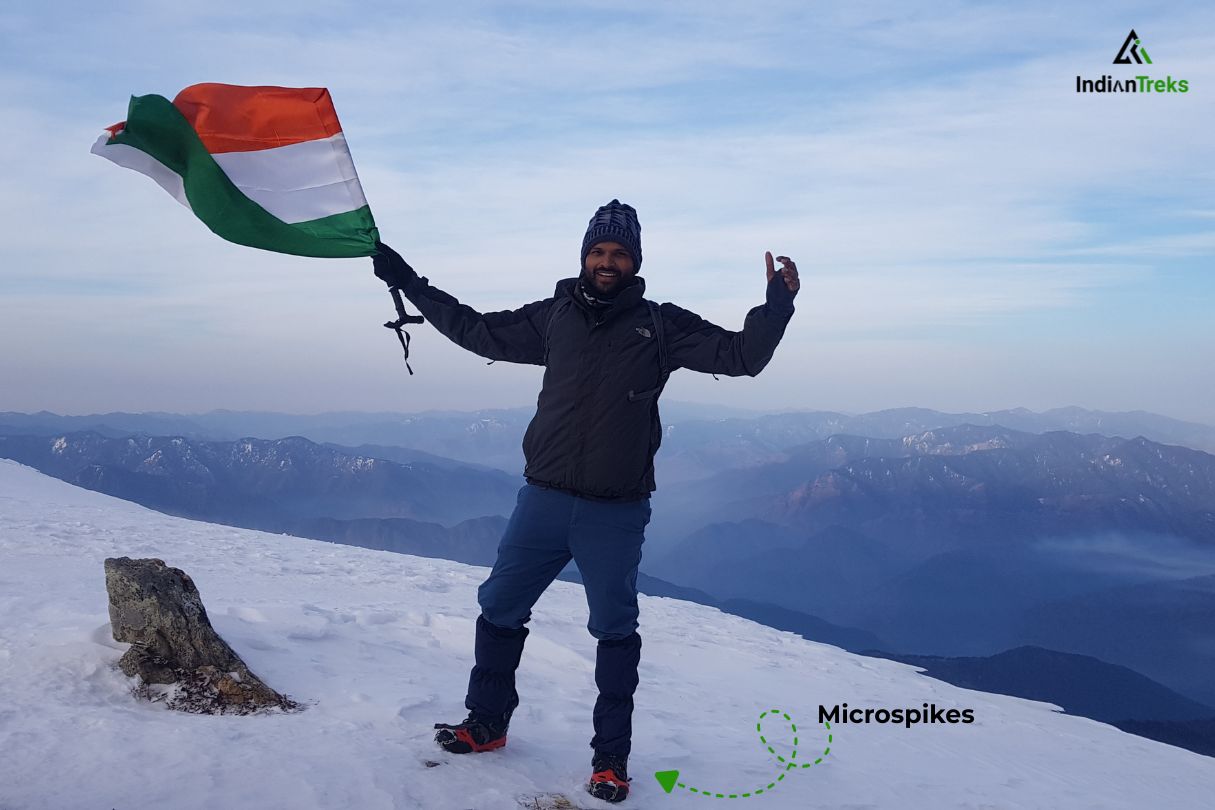
Unlike microspikes, crampons require special training, need to be used with rigid mountaineering boots, and are often paired with an ice axe for safety. While they offer unmatched traction on extreme terrain, they’re not practical for casual snow hikes or mixed trails where microspikes shine.
Microspikes vs. Snowshoes
While both microspikes and snowshoes are designed to make winter hiking safer, they serve very different purposes.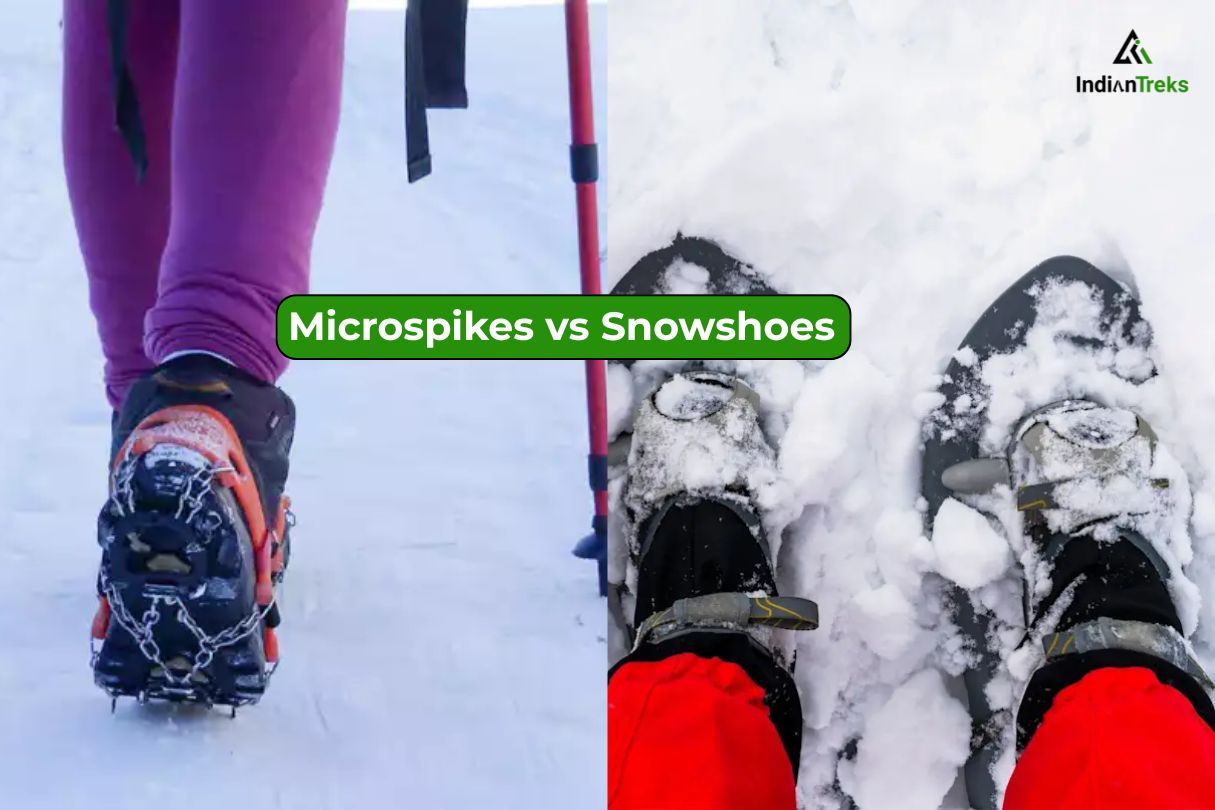
Snowshoes are built for flotation — they spread out your weight so you don’t sink into deep or powdery snow. This helps prevent post-holing, which is when your legs plunge deep into the snow (sometimes up to your thighs or waist), making progress slow and exhausting. Snowshoes are especially useful in fresh, deep snow or during spring conditions, when melting snow makes the surface unstable and you need even weight distribution to stay on top.
Microspikes, on the other hand, are best suited for packed, low-angle snow and icy trails. Their traction-focused design grips firmly into hard surfaces, making walking smoother and safer. On the same type of terrain, snowshoes can feel bulky and tedious, whereas microspikes allow for a faster, more natural stride.
The Best Microspikes
If you’re planning to hike this winter, investing in a reliable pair of microspikes can make all the difference. With so many options available, it’s important to choose a brand that offers durability, comfort, and strong traction. Here are two of the top-rated microspike brands trusted by hikers around the world:
Kahtoola Microspikes – Known for their durability and easy-to-use design, Kahtoola microspikes are a favorite among winter trekkers. Their stainless-steel spikes provide excellent grip on icy trails, and they slip easily over most hiking boots.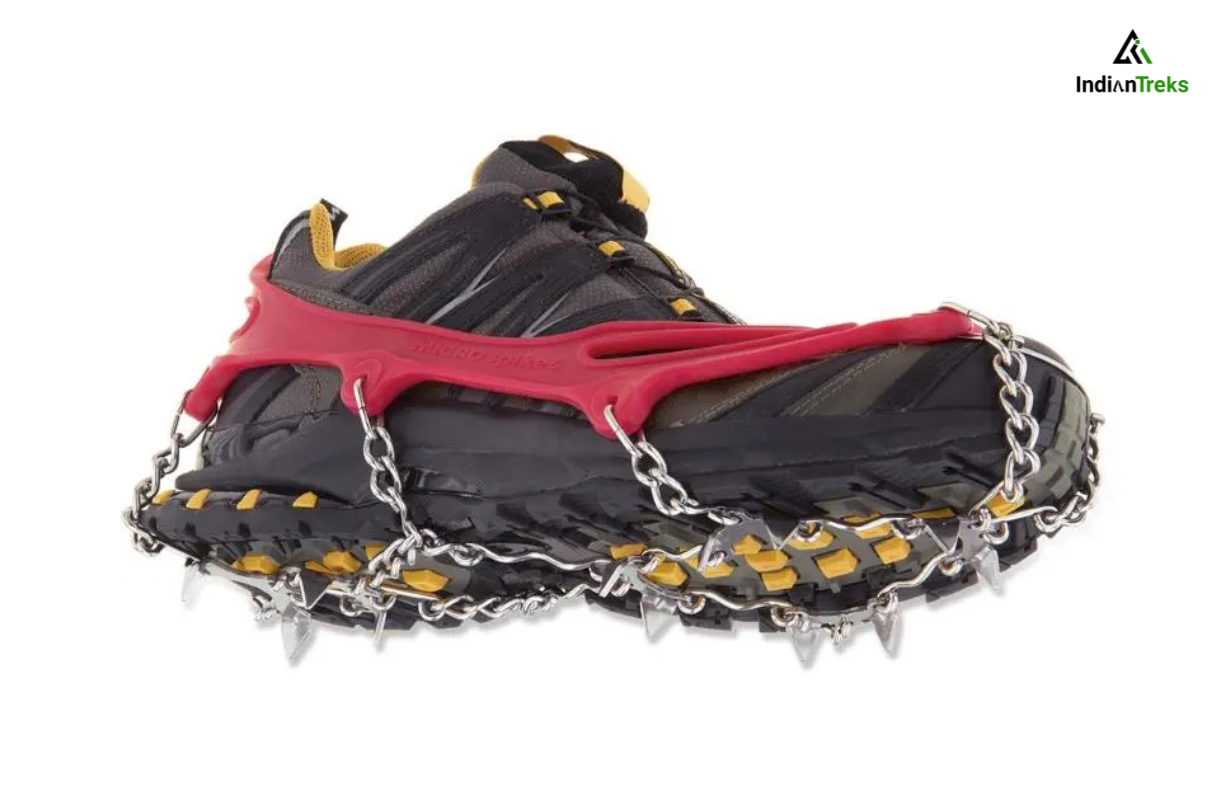
Hillsound Trail Crampons – Another excellent option, Hillsound offers slightly longer spikes for added traction on mixed terrain. They’re lightweight, secure, and built to withstand challenging winter conditions.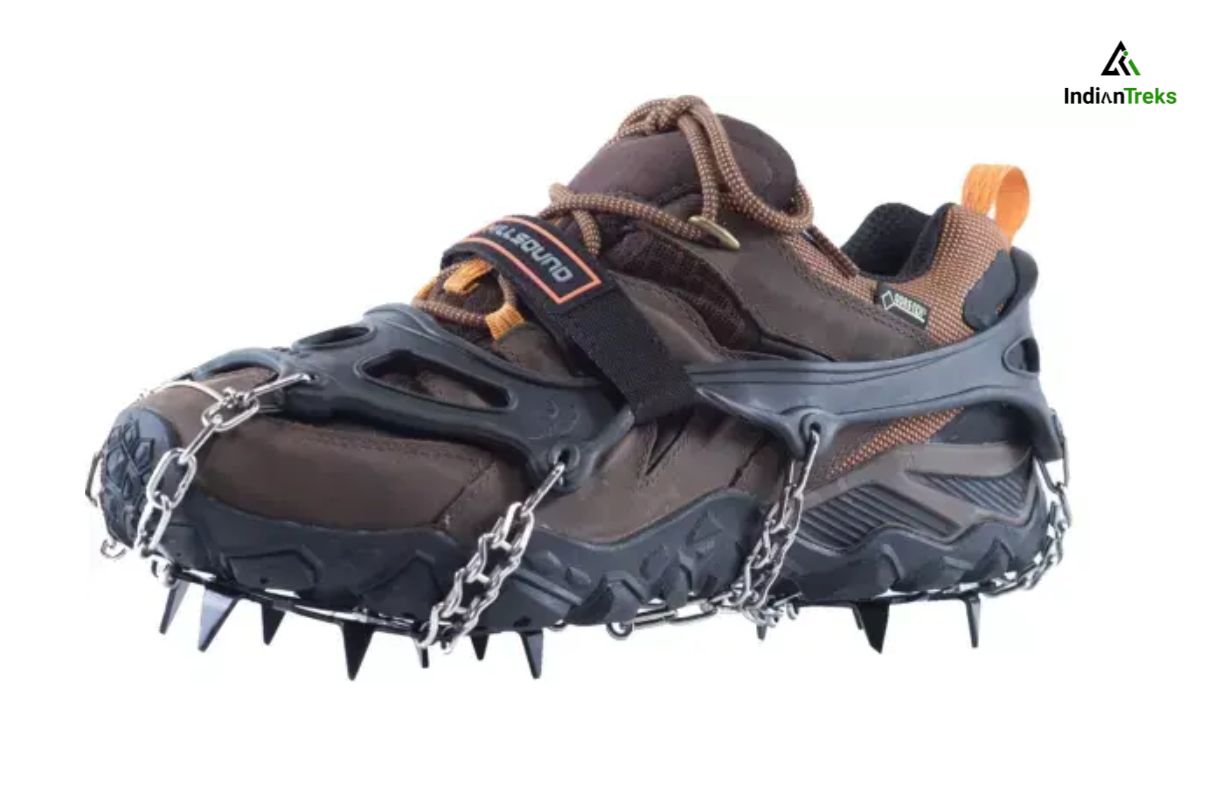
Both brands are reliable, high-quality choices that will keep you steady and safe on snow and ice, whether you’re trekking in the Himalayas, Rockies, or local winter trails.
Tips and Recommendations
When deciding between microspikes and crampons for winter hiking, it’s important to consider the type of terrain and activities you plan to tackle.
For most hikers, a lightweight and affordable pair of microspikes will handle the majority of snow and ice conditions you’ll encounter on daily trails. They provide reliable traction on packed snow, icy paths, and moderately steep slopes, helping prevent slips and falls without adding extra bulk to your gear.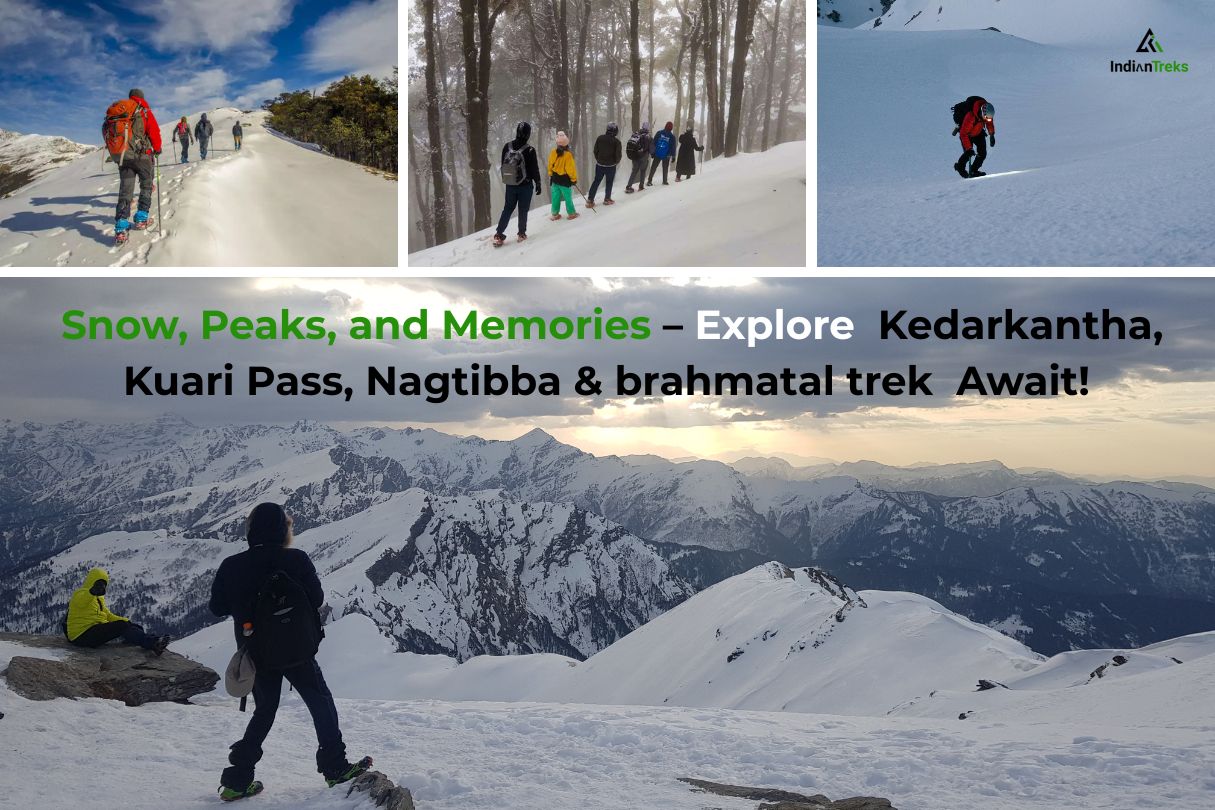
Crampons, on the other hand, are best reserved for mountaineering or extremely challenging winter adventures. With their longer, sharper spikes, they excel on steep, high-angle ice fields or technical climbs, but they require rigid mountaineering boots and proper training to use safely.
Whether you’re trekking to Kedarkantha, Kuari Pass, Nagtibba, brahmatal trek, or other scenic Himalayan trails, using the right traction device can make your journey safer and more enjoyable.

About Author – Vivek Rana
With nearly 10 years of experience in high-altitude guiding, the founder of this trekking organization is more than just a trek leader—they are a pioneer of adventure in the Himalayas. Having conquered multiple 6000-7000 meter peaks, they have led over 150 treks across the most breathtaking and challenging terrains, including Har Ki Dun, Kedarkantha, Borasu Pass, Bali Pass, Buran Ghati, Rupin Pass, Pin Bhabha, and the mighty Black Peak.
Their deep-rooted connection with the mountains isn’t just about reaching summits—it’s about creating life-changing experiences for those who dare to explore. Every expedition they lead is an invitation to step beyond limits, embrace the wilderness, and feel the raw power of the Himalayas like never before.
This is not just trekking; this is a journey into the heart of the mountains—with a guide who knows them like a lifelong friend.

